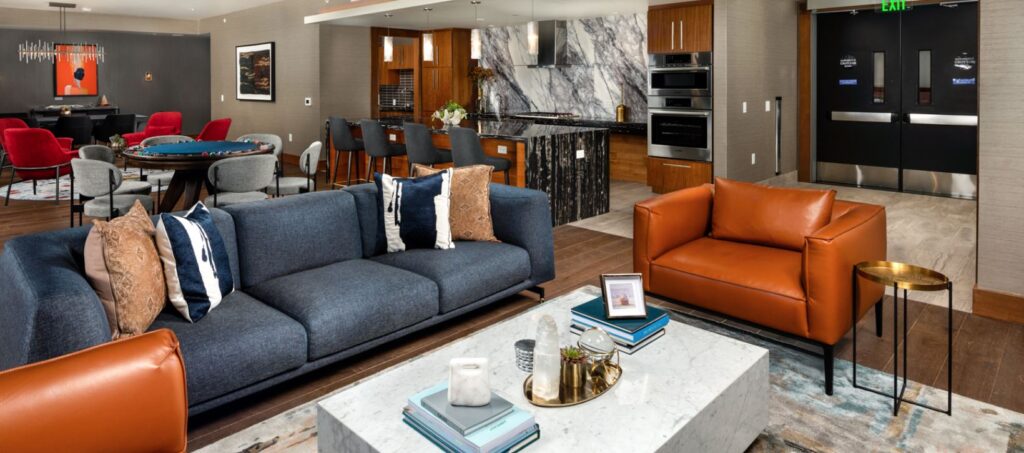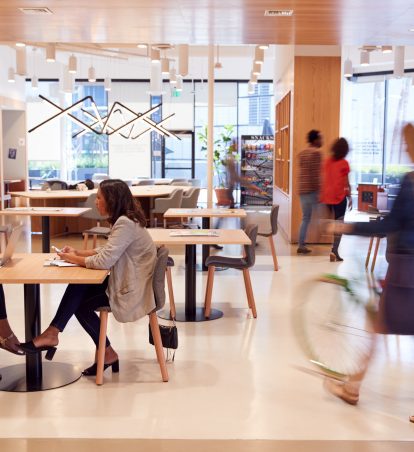Co-Living: The Newest Trend in Serviced Accommodations
With the rise of remote work and the adoption of the nomadic lifestyle, co-living has gained traction as a viable extended stay option within the serviced accommodation sector. Continually soaring housing costs and a growing demand for flexible living arrangements, have helped to fuel the rise of this shared space and socially inviting type of temporary residential setting.
What's abundantly clear is that business travelers, remote workers, digital nomads, and individuals in the midst of relocation are actively seeking alternatives that go beyond the ordinary. They're not just looking for a place to stay; they're yearning for a more affordable and enriching experience. That’s where co-living comes in. It's about finding a sense of community, forging connections, and embracing a lifestyle that combines work, life, and adventure in unique and exciting ways.
So, what is Co-Living?
Co-living within the serviced accommodation industry represents a contemporary approach to communal living. At its core, co-living involves the provision of fully furnished and well-equipped living spaces within a shared environment, primarily situated in major cities. This concept stands apart from traditional serviced apartments, corporate housing or hotels, prioritizing community, convenience, an affordable cost of living and an enriched housing experience.

Understanding the Key Features of Co-Living Spaces:
- Private Rooms, Social Experience: Serviced accommodations typically offering residents private bedrooms or living spaces that serve as personal sanctuaries within a communal setting. This balance between privacy and social interaction is a hallmark of co-living.
- Emphasis on Shared Spaces: Shared spaces boast communal areas, including kitchens, living rooms and workspaces—specifically designed to encourage interaction and collaboration among residents.
- Affordable Housing: Shared housing often provides a cost-effective alternative to traditional serviced apartments or hotels. By sharing rent and utilities, residents can significantly reduce their accommodation expenses, making city living more accessible.
- All-Inclusive Amenities: Residents of shared spaces enjoy the convenience of comprehensive amenities such as high-speed internet, utilities, cleaning services and often shared recreational facilities like game rooms or fitness centers.
- Community-Building Activities: Operators of shared accommodations frequently organize social events, workshops and activities aimed at fostering connections and a sense of belonging among residents.
- Flexibility in Stay Duration: Many shared arrangements offer flexible lease terms, allowing residents to adapt to changing circumstances without the constraints of long-term leases.
Unique Characteristics of Co-Living Across the Globe
Co-living is a concept that adapts and evolves, taking on the unique characteristics of the region the accommodations are located in. Here’s our take on the nuances of these extended stay options in Asia Pacific (APAC); Europe, the Middle East and Africa (EMEA); and the Americas.
Co-Living in Asia Pacific (APAC):
Co-living in the Asia Pacific region has witnessed substantial growth and popularity in recent years, driven by factors such as rapid urbanization, high housing costs and a strong desire for social connections among residents. Here are some key insights into co-living in APAC:
- Shared Living, Shared Experiences: In APAC, co-living often revolves around shared experiences. Individuals or small groups rent private rooms or apartments within larger community-oriented spaces.
- Urban Hotspots Balanced with High Cost of Living: Key cities like Singapore, Hong Kong, Tokyo, Seoul, Hyderabad, and Sydney have embraced shared living as a solution to the challenges of those cities’ high urban living costs. They are usually centrally located, offering easy access to transportation, amenities, and entertainment options.
- Flexibility at its Core: In addition to flexible rental terms, residents can choose shorter durations or the option to move between different shared living spaces within the same network.
Co-Living in Europe, the Middle East and Africa (EMEA):
Co-living in EMEA presents a varied landscape, with different interpretations of what communal living means. The product definitions and offerings can change significantly depending on location. Here's a closer look:

- Diverse Offerings: EMEA showcases a wide range of communal living options. True co-living accommodations in this region often feature purpose-built residences with fully equipped micro-units and a wealth of on-site amenities, from shared kitchens to swimming pools.
- Variations Abound: Variations in communal living extend to buildings with room-only or shared dormitories centered around communal kitchen and living spaces. Some agencies even offer a 'house share' product, allowing guests to book rooms in shared accommodations from a portfolio of residential houses or apartments.
- Changing Definitions: Communal living in EMEA has blurred the lines between traditional serviced apartments, hotels and multifamily residences. For instance, an existing studio accommodation has been rebranded as co-living, often incorporating co-working and communal spaces.
- Different Terms and Conditions: Minimum lengths of stay can vary greatly across EMEA, ranging from one night at hostel-style properties to one month or more in true communal living residences. Utility bills, council tax and TV licenses may be separate costs in many properties.
- Due Diligence Matters: Given the diverse offerings and conditions, due diligence is essential. This includes understanding payment terms, commission structures and ensuring compliance with Synergy standards.
Co-Living in the Americas:
Co-living in the Americas has yet to fully catch on, but the options available in each market takes on a distinct character:
- US Shared Living Landscape: In the US, the traditional shared living model typically features separate quarters, each with a bedroom, bathroom, small common area and a communal kitchen and laundry. However, this model is not yet widespread and is being closely monitored by Synergy for its potential in the corporate housing sector.
- Canada's Unique Challenge: In Canada, the shared living landscape is limited. The product somewhat resembles student housing, but doesn't quite meet the quality and safety standards expected for corporate clients.
- LATAM's Private Suites: In Latin America (LATAM), shared living often revolves around private suites. Residents typically enjoy their own bedroom and bathroom, ensuring a higher level of privacy. However, the co-living spirit thrives in shared living areas like kitchens and living rooms, promoting community and social interaction among residents.
How Synergy Can Simplify Co-Living Accommodation Options:
At Synergy, we understand that co-living is not just a place to stay; it's a lifestyle. With our extensive expertise in the serviced accommodation industry, we've honed our ability to curate exceptional communal living experiences that cater to the diverse needs of today's travelers and professionals. Here's a glimpse into what sets Synergy’s offering apart in the world of communal living:

- Navigating the Shared Housing Maze: In a world where the lines blur between serviced apartments, hotels and multifamily residences, we're here to guide you through the evolving co-living landscape. We offer clarity and transparency, helping you make informed choices about the communal living experience.
- Global Sourcing Expertise: Through our sourcing activities worldwide, we have our finger on the pulse of the co-living landscape. We come across unique providers who blend the traditional hotel experience with elements of co-working, co-living, restaurants, wellness, retail and more, expanding rapidly to meet the demands of the modern traveler.
- Thoughtful Matching, Not Random Pairing: We never leave co-living arrangements to chance. Our meticulous roommate matching process ensures that residents are paired with compatible individuals, fostering a harmonious living environment.
- Diverse Options: Synergy offers an array of co-living options that go beyond traditional definitions. Our creative approach to communal living includes purpose-built residences with fully equipped micro-units, shared dormitories centered around communal kitchens and living spaces, and even residential houses or apartments in our 'house share' portfolio.
- Tailored Products: Recognizing the diverse needs of our clients, we provide a range of co-living products. From true co-living residences with communal spaces and inclusive amenities to co-working and living spaces within existing studios, we tailor our offerings to cater to different preferences and durations of stay.
- Global Reach: Synergy's co-living solutions span the globe, with offerings in various regions including EMEA, APAC, the US, LATAM and Canada. Wherever you seek shared living accommodations, we have options to suit your needs.
Your Expert in Serviced Accommodations and Collaborative Housing
With a vast network of over 800,000 housing options across 85 countries, Synergy is your local expert wherever your journey takes you. Our mission is simple yet profound: to create a sense of "home" for every guest, no matter where they are in the world.
We understand that every traveler has unique needs, and we pride ourselves on tailoring our accommodations to ensure a memorable experience. Our dedicated team, available 24/7, goes beyond providing keys and premium properties to attend to the details that elevate your stay. We offer a diverse range of accommodations, from furnished apartments and co-living properties to extended stay hotels—all with the comforts of home.





